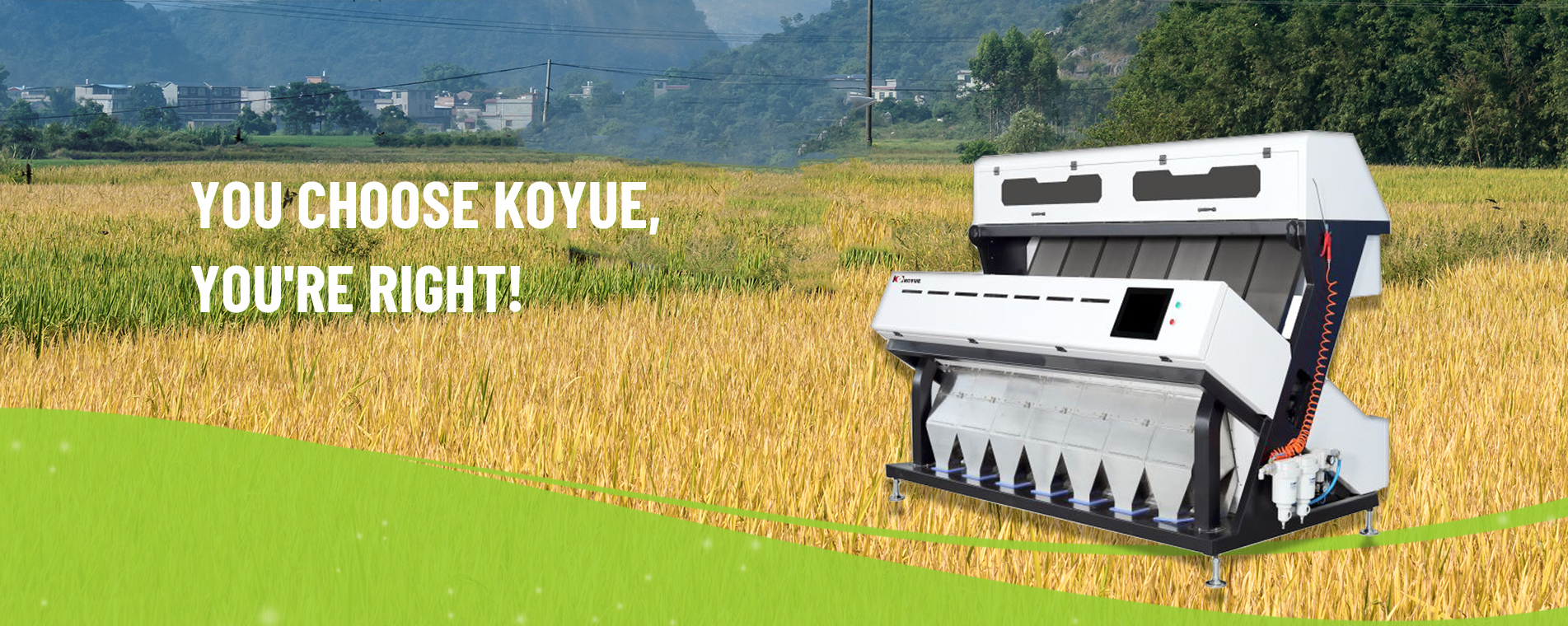La capacidad principal del clasificador por color, diseñado para la diversidad global de materiales, reside en su adaptabilidad. No son máquinas estandarizadas, sino más bien "clasificadores inteligentes" capaces de aprender rápidamente las reglas locales. Cuentan con tres soportes técnicos principales:
1. Los "ojos" ópticos personalizables le permiten ver las características regionales
El sensor espectral de alta resolución, presente en los clasificadores por color de alta gama, puede capturar diferencias sutiles difíciles de detectar a simple vista. Por ejemplo, al clasificar mangos en el sudeste asiático, el sensor puede ajustarse para que sea especialmente sensible al color de transición amarillo-verde; los mangos en este rango suelen estar en su punto óptimo de madurez, ideales para el transporte y con un sabor óptimo. En el caso de la avena del norte de Europa, el sensor se centra en eliminar partículas con manchas de moho negro, que pueden ser portadoras de hongos perjudiciales para el cuerpo humano.
Aún más inteligente es que estos sensores también pueden "aprender" nuevos materiales: al importar datos de imágenes de muestras locales de alta calidad, el equipo puede establecer nuevos estándares de clasificación en pocas horas sin tener que esperar a que los ingenieros vengan a depurarlos.
2. Lógica de clasificación flexible para gestionar escenarios complejos
Diferentes materiales requieren diferentes estrategias de clasificación. Para las frágiles nueces marroquíes, el dispositivo de inyección de gas del... clasificador de colores Adoptará un modo de baja presión y alta frecuencia para evitar que los granos se rompan. Al procesar grandes cantidades de maíz americano, el equipo cambiará automáticamente al modo de alta eficiencia, procesando miles de granos por segundo y manteniendo una alta tasa de detección de granos mohosos.
Esta flexibilidad también se refleja en la gestión de la mezcla multimaterial. En una planta procesadora de especias de la India, una clasificadora por color puede clasificar simultáneamente semillas de comino, hinojo y cilantro: son de tamaño similar, pero de color diferente. El equipo puede completar la clasificación en una sola pasada mediante parámetros multidimensionales preestablecidos, eliminando así la molestia de realizar múltiples clasificaciones.
3. El soporte de datos localizados permite que el dispositivo "entienda" el mercado.
La marca líder mundial en clasificadores por color establecerá bases de datos de materiales en diferentes regiones. Por ejemplo, en el caso de las bayas de goji chinas, la base de datos almacena imágenes de bayas de goji de zonas de producción como Ningxia, Qinghai y Xinjiang, identificando impurezas comunes (como tallos y granos de arena) y defectos de calidad (como ennegrecimiento y arrugamiento) en cada zona. Para los granos de cacao de África, se han incluido características de muestra de lugares como Ghana y Costa de Marfil para que el equipo se adapte rápidamente a los requisitos de clasificación locales.
Estos datos permiten a la clasificadora por color no solo clasificar los materiales, sino también comprender el mercado. Por ejemplo, el arroz exportado a Europa debe cumplir con los estrictos estándares de detección de amarilleamiento de la Unión Europea. El equipo optimizará automáticamente la identificación de estos defectos, ayudando a los clientes a evitar riesgos comerciales.
De la “adaptación” al “empoderamiento”: ¿Cómo los clasificadores de color están transformando la cadena industrial global?
Cuando máquinas clasificadoras de color Pueden adaptarse con precisión a la diversidad de materiales globales, lo que aportan no es sólo una mejora en la eficiencia de clasificación, sino también una remodelación de la cadena industrial.
En las plantas procesadoras de anacardo de Vietnam, los equipos pueden distinguir rápidamente diferentes grados de granos de anacardo, lo que permite a las empresas ajustar con flexibilidad la estructura de sus productos a las demandas del mercado internacional y evitar el desperdicio de materias primas de alta calidad. En las plantas de aceite de palma de Malasia, la determinación precisa de la madurez de la fruta mediante clasificadores por color puede incluso ayudar a los agricultores a optimizar el tiempo de recolección y aumentar la producción de aceite.
Éste es quizás el valor más conmovedor de los clasificadores de color modernos: respetar las diferencias y al mismo tiempo crear más posibilidades.


 español
español English
English français
français italiano
italiano русский
русский português
português Tiếng việt
Tiếng việt العربية
العربية فارسی
فارسی עברית
עברית








 Red IPv6 compatible
Red IPv6 compatible
